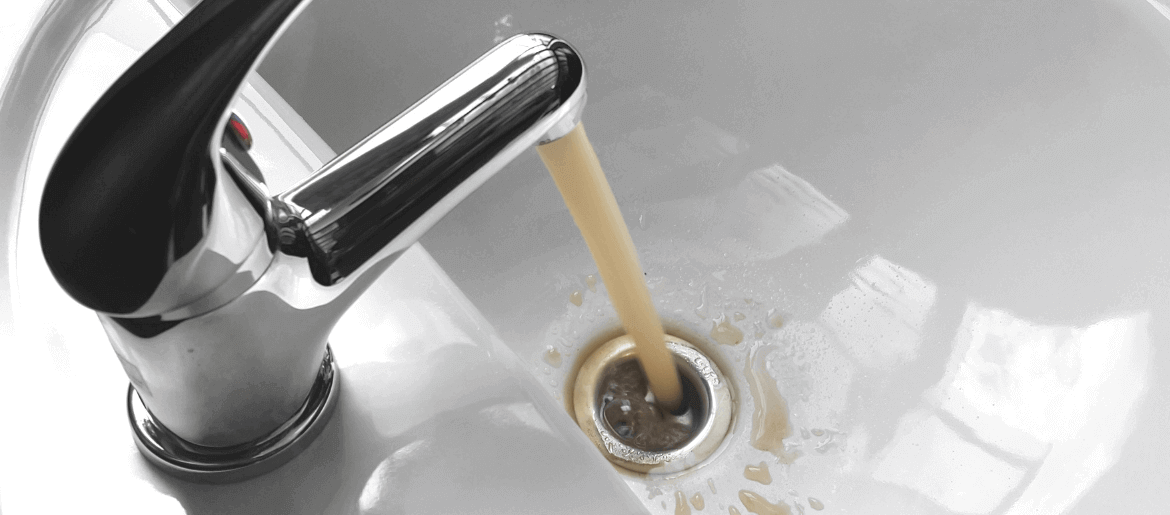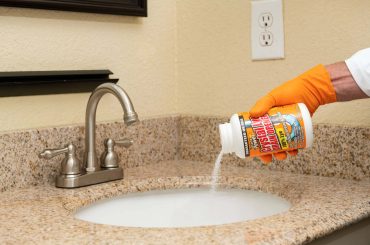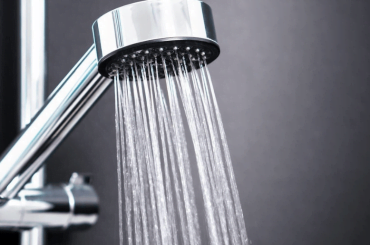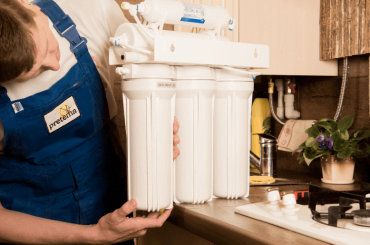Why does my bath water always turn brown? You might be wondering the same thing. While it’s not necessarily a cause for alarm.
Have you ever taken a bath and had the water turn brown? Or maybe your shower or bathtub has turned brown? Chances are, if you live in a city, the water that comes out of your taps is not crystal clear.
In this post, we’ll take a closer look at what causes brown bathwater and some ways to prevent it. Stay tuned!
Why Is My Bath Water Brown | Causes & Solution
Several factors can contribute to brown bathwater, including water quality issues and improper maintenance of household plumbing. For example, if there is excessive rust or sediment in the pipes leading to your bathroom this can cause discoloration in the water.
Additionally, hard water can also cause your bathwater to turn brown over time. Hard water contains high levels of minerals, such as calcium and magnesium, which can build up in your pipes. This can lead to increased sediment or rust in the water which can eventually cause discoloration.
Finally, certain health conditions like jaundice and hepatitis may also contribute to brown bathwater. If you are experiencing this symptom and have any concerns be sure to talk to your doctor.
While it may not be a cause for alarm, brown bathwater can certainly be unsightly and unpleasant.
Solution to Fix Brown Water Problem & Make Bath Water Clear
There are several steps you can take to help prevent discolored bathwater and keep your water clear:
- Household plumbing: First, make sure that you are using properly maintained and functioning household plumbing. This can help reduce sediment and other impurities in your water, which can contribute to brown bathwater.
- Water filtration system: Second, consider installing a water filtration system in your homes, such as a water softener or reverse osmosis filter. These systems can help to remove sediment, rust and other impurities from your water supply, which can prevent discoloration.
- Reduce Minerals: Take steps to reduce the number of minerals in your water supply by using less soap or detergent when bathing. This can help reduce the build-up of mineral deposits over time.
If you are experiencing persistent brown bathwater, it may also be helpful to talk to your local water utility about any possible issues with your water supply.
They can help identify and address potential sources of discoloration in your water so that you can enjoy clear, clean bathwater again. With these tips and strategies, you can help keep your bath water clear and enjoy a relaxing soak!
Potential health Risks Associated With Brown Bath Water
There are some potential health risks associated with brown bath water, including:
- Skin and eye irritation from exposure to impurities or chemicals in the water
- Increased risk of infection or illness if the water is contaminated with bacteria or other pathogens
- Allergic reactions or sensitivities to certain minerals or chemicals that may be present in the water
- Risk of respiratory problems or other health conditions if the water has a high level of toxic contaminants
- Increased risk of cancer or other long-term health effects if the water has been contaminated with hazardous chemicals, like lead or mercury.
Overall, it is important to be aware of these potential risks and take steps to protect your health when bathing in brown water. If you notice any unusual symptoms or health concerns, be sure to speak with your doctor as soon as possible.
Additionally, it is important to regularly test and monitor the quality of your water supply so that you can take action to address potential issues before they become a problem.
By being proactive and vigilant, you can help protect your health and enjoy clear, clean bathwater.
How often should I be cleaning my bathtub and drains to prevent this from happening again?
There are a few key steps you can take to help prevent brown bathwater and keep your drains and bathtub clean. These include:
- Regularly cleaning, scrubbing and descaling the surfaces of your bathtub, shower stall, or other areas that come into contact with water
- Using drain protectors or screens to prevent hair and other debris from clogging up your drains
- Using mild, non-abrasive cleaners to clean your bathtub and drains regularly
- Taking steps to prevent or address the buildup of mineral deposits over time, such as using less soap or detergent in the bathwater or installing a water filtration system
By incorporating these strategies into your regular cleaning routine, you can help keep your bathtub and drains clear, clean and free from unwanted build-up.
In addition to these preventative measures, it is also important to be mindful of any warning signs or symptoms that may indicate a problem with your drains or water supply, so that you can take action as soon as possible.
With proper care and maintenance, you can help avoid brown bathwater in the future and enjoy a relaxing soak!
Is there anything I can do to prevent my bath water from turning brown in the first place?
There are a few things you can do to prevent your bath water from turning brown.
- One is to make sure that you allow the water to run for at least 30 seconds before getting in so that any dirt or rust in the pipes has a chance to work its way out of the system.
- You may also want to consider using a filter in your bathtub to help trap any dirt or debris that may get into the water.
- Finally, it can be helpful to clean your bathtub regularly so that any built-up dirt or grime doesn’t end up in the water as you’re taking a bath.
By taking these steps, you can help keep your bath water from turning brown and ensure that you can enjoy a relaxing, clean and comfortable bathing experience.
Also Read: Can You Paint Bathroom Faucets?
FAQs – Why Is My Water Brown?
Is it OK to bathe in brown water?
There is no definitive answer to this question, as the health risks associated with bathing in brown water may vary depending on several factors, including the impurities or contaminants present in the water and your health status.
That being said it is generally recommended that you avoid bathing in brown water if possible as there may be potential risks to your health.
Why is my bath water yellow-brown?
There are a few possible reasons why your bath water may be yellow or brown.
First, it could just be the color of your local tap water. If this is not the case, then there may be something wrong with your plumbing system. You may have a build-up of rust or sediment that is causing the discoloration. There may also be an issue with your water heater or boiler that is causing the yellowing.
If you are concerned about the color of your bath water, it is best to consult a plumber or water treatment professional to have your system inspected and get some potential solutions for improving the color and quality of your water.
Can rusty water make you sick?
There is some debate as to whether or not rusty water can make you sick. Some studies have shown that exposure to rust in water can cause several negative health effects, including nausea, dizziness and irritation of the skin and eyes.
However, many experts believe that drinking small amounts of rust in water would not pose a significant health risk, as the body can filter out most of the impurities.
Final Thought
There are many possible explanations for why your bath water is brown. It could be due to the pipes in your home, the water source, or something that was added to the water.
If you’re concerned about the quality of your water, you can contact your local water supplier to have it tested. In most cases, brown bath water is harmless and will clear up on its own.
You can get rid of this with proper plumbing fixtures, flushing out sediment from your pipes and regular maintenance of your water heater or boiler.
Thanks for reading, I hope this article helped answer your question and give you a better understanding of why bath water can be brown.





